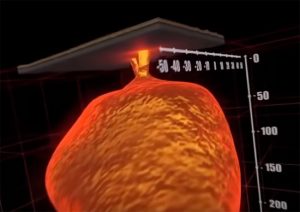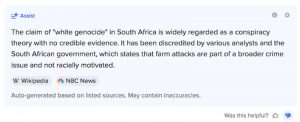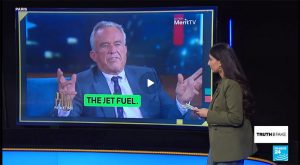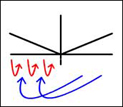A Summary of the History of the World, in Videos
THE BRONZE AGE (5000 BC — 1200 BC)
by Edward Ulrich, updated February 18, 2022
The videos on this page detail a time period of the Bronze Age from 5000 BC to 1200 BC. It is a part of the article “A Summary of the History of the World, in Videos.”

This video summaries significant defining characteristics of the Bronze Age in the Eastern Mediterranean Sea and the Fertile Crescent of the Middle East between 3,300 BC and 1,200 BC.

This video summarizes many significant aspects of the ancient Mesopotamian civilization.

This video summarizes civilizations that existed in Bronze Age Mesopotamia, being societies that were dependent on the Tigris-Euphrates river system in the region that is now Iraq and Syria.

This documentary explains the Mesopotamian ruler Hammurabi, who created one of the first systems of codified laws.

Mesopotamia is the region of the Tigress and Euphrates rivers in what is now Syria and Iraq. It is where the world’s oldest civilizations were founded after the invention of agriculture with the growing and storing of grains like wheat, millet and barley. They developed irrigation, writing, the wheel, and codes of law including legal contracts. The civilization was prosperous for three thousand years, but it started to decline at about 2,350 BC due to declining crops from desertification, among other reasons such as the rise of iron metallurgy which was a resource that did not exist in that area.
[Note: I think the ancient Indus Valley civilization is very interesting due to the fact that they were not war-like, they made sanitation be a priority with their city planning and architecture, and they implemented ingenious methods of harvesting seasonal water from the nearby river system.]



This video explains the large Indus Valley civilization in the fertile river basin of the Indus river in what is now western India and Pakistan, which started at around 3000 BC.

This 2006 SBS Australia documentary explains the discovery of vast advanced ancient cities in the Indus River Valley that existed at the same time as Mesopotamia (who they also traded with.) Among the many topics it talks about, it explains how cities in the region made use of incredibly advanced engineering to capture and control seasonal flood water, and it explains how the cities were very productive and prosperous agricultural and manufacturing centers that created cotton fabrics, pottery, and bronze. [Note: And see starting at about 10:30 for details about the elaborate systems that were created to harvest seasonal water.]

This BBC Two documentary explains many aspects of the 5,000 year old Stonehenge stones in England.

“Who built Stonehenge and why? Discover how the last decade of groundbreaking archeological digs has revealed major new clues to Britain’s enigmatic 5,000-year-old site and the people who constructed it.”

Newgrange is a large prehistoric burial mound in Ireland that dates to 3200 BC, which is about 500 years older than Stonehenge. Its entrance is aligned with the rising sun on the day of the winter solstice, causing a beam of sunlight to reach the inner chamber.
These videos are created by Dan Davis, an author who writes sci-fi and historical fantasy books. They explain the various cultures in Bronze Age Europe and the relationships between them. See his Amazon page at this link.






This video explains the Funnelbeaker culture that diffused northward into Europe during the Bronze Age from 4,200 BC to 2,650 BC, where they introduced the use of plows for growing crops in permanent fields. They are named after their ceramics that have “funnel”-type tops which have been found in their tombs. The Funnelbeaker culture eventually declined once the “Corded Ware” populations arrived.

This video summaries the “Pitted Ware” hunter-gathering culture that existed in the lower coastal regions of Scandinavia between 3,500 BC to 2,300 BC.

This video summarizes the “Corded Ware Culture” that was very prominent throughout Central, Northern, and Eastern Europe between 3,000 BC and 2,350 BC.

This video explains the “Koryos” war culture that swept westward into Europe from the Eurasian Steppes, where they waged war against each other as well as the people in the lands where they travelled.

This video summaries the Yamnaya Culture, who were pastoralists that migrated from the Eurasian Steppes north of the Black Sea into Europe from between 3,300 BC and 2,600 BC.
Advanced civilizations developed on the shores of Alpine lakes in the central European countries of Austria, Switzerland, and Germany starting at about 5,000 BC. Those people often built settlements on land that was marshy, so they developed a technology of driving sharpened trees into the mud to create platforms for building their structures (as was also later done in Venice, Italy.)





This video goes back in time to 3,000 BC, depicting ancient lakeside “Pile Dwelling” settlements in Switzerland.

This video shows recreations of prehistoric “Pile Dwellings” along lakes in the Alps from the Neolithic period which dates from 5,000 BC - 500 BC. From the video page: “The UNESCO World Heritage prehistoric pile dwellings (stilt houses) around the Alps, in Germany, Switzerland, France, Austria and Italy was quite a difficult World Heritage site to visit! Despite there being hundreds of remains scattered around, almost all of them are submerged in several meters of water, which doesn't make for an interesting video. But join me as I visit the pile dwellings museum in Unteruhldingen, Germany.”

This is a recreation of a Hallstatt Culture folk dance dating to 800 BC, with the costumes and dance moves being based on artifacts found in graves, salt mines, and ritual cave sites.

This video explains the ancient lakeside civilization of Hallstatt, Austria, which is a town that developed around a large salt mine in prehistoric times. The region was very influential throughout Europe, and the town is an important archeological site.

This video explains the discovery of “Otzi,” a man who was found frozen in the Italian Alps that died between 3350 and 3100 BC. The find gave many insights into how people lived at that time.

This video explains the history of Britain developing due to the introduction of the technologies of copper, bronze and iron.

This documentary explains a 2007 discovery of a large mysterious battle that occurred in the Tollense Valley of Germany between 1300 and 1200 BC, a thousand years before writing existed in that area. So far the remains of more than a thousand people have been uncovered. Prior to the discovery, evidence of such violence in that part of Bronze Age Europe was almost unheard of, and it appears that one side was using Bronze weapons while the other was using Stone Age weapons, and horses were used in the battle as well.

This documentary details Europe in a time period of 1800—500 B.C., also explaining how previously sheep herding people from the Eastern Steppes infiltrated the European continent starting in 3,500 BC, bringing their language, horses, and technology such as wheels and bronze metallurgy. It explains how people in mainland Europe became relatively advanced even before being subjugated by the Romans.

This video shows the distribution of cultures throughout Europe over time from 2,300 BC to 100 AD.
Videos on the channel “How to Make Everything” demonstrate the traditional processes for creating many types of materials.



This video explains how the rare metal tin was mined in antiquity, which was an important element in the process of smelting bronze metal.

This video demonstrates how copper and bronze were smelted in antiquity.
The advanced Bronze Age civilizations along the eastern Mediterranean Sea were sacked by hordes of mysterious “Sea Peoples” at around 1,200 BC, bringing the downfall of all of the societies except for Egypt who aggressively defended itself at the mouth of the Nile river. The resulting catastrophe is known as “The Bronze Age Collapse.”





This video explains that most of the major Bronze Age city-states in the eastern Mediterranean collapsed at the same time at around 1,200 BC, mostly due to being sacked by a mysterious horde of “Sea Peoples.” Only Egypt was able to effectively defend itself from the attacks, but the collapse of the rest of the cities in that region weakened Egypt for the next thousand years due to depriving it of trading partners. The collapse of the civilizations brought about a “dark ages” that preceded a later period of enlightenment in ancient Greece. Also explained is how the cities in the region were already in a weaked state before the attacks due to various reasons, such as the resource of tin (that is necessary in the process of creating bronze) being a scarce commodity, the climate was going through a 300 year dry period that decimated crops, and many earthquakes were also happening in that region at the time.

This video talks about the mysterious “Sea Peoples” who sacked civilizations in the Eastern Mediterranean at the end of the Bronze Age, causing a collapse of the societies in that region and ushering in a “dark age.”

“In this special episode, we explore the events of the Late Bronze Age Collapse, when civilisation in the Eastern Mediterranean came to an abrupt and mysterious halt.”

This longer documentary explains the Bronze Age Collapse in detail.

This documentary explains wars that took place in the Middle East Bronze Age at around 1,300 BC, where they often fought brutal battles on chariots.

This video depicts the Battle of Kadesh, from Ridley Scott’s movie “Exodus: Gods and Kings.” The battle took place in 1274 BC, and it is the first in recorded history where its tactics and formations are known. It is believed to be the largest chariot battle ever fought, involving between 5,000 and 6,000 chariots in total.
<< previous section | next section >>
Article Tree
| A Summary of the History of the World, in Videos |
| THE BRONZE AGE (5000 BC — 1200 BC) |






















